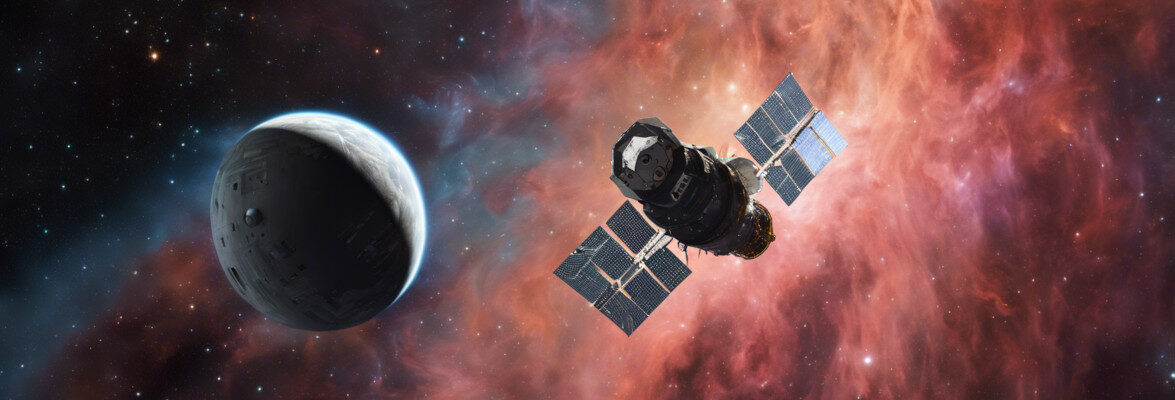
An article published in the journal “Nature” reports the results of a study on the formation of a primordial galaxy cluster, observed in its early stages. A team of researchers led by Luca Di Mascolo of the University of Trieste, Italy, used the ALMA radio telescope to study the intracluster medium, the gas that permeates the protocluster around the galaxy MRC 1138-262, known as the Spiderweb Galaxy, and has an overall mass greater than the mass of the galaxies that form it. Observations of the intracluster medium in forming clusters are scarce, making those observations precious to understand the formation processes of galaxy clusters.
About 10.6 billion light-years away from Earth, the Spiderweb Galaxy is an irregular galaxy that has been known for a long time as a radio source thanks to emissions that come from the supermassive black hole at its center. Observations indicate that its shape is due to the fact that it’s the result of the merger of several smaller galaxies. Over time, astronomers started suspecting that it’s at the center of a galaxy protocluster, and observations began with the aim of examining the ongoing formation processes, not without difficulty.
The intracluster medium is a giant halo of gas that permeates a galaxy cluster and, with its combined mass exceeding that of the galaxies within it, plays an important role in its formation and evolution. Observing the intracluster medium of a primordial protocluster such as the one around the Spiderweb Galaxy was possible by exploiting the thermal Sunyaev-Zeldovich (SZ) effect, which occurs when light from the cosmic microwave background radiation passes through the gas and is influenced by its interaction with fast-moving electrons in the gas. Observations at the right frequencies show that effect from a galaxy cluster as a shadow on the background formed by the cosmic microwave background radiation.
The analysis of the collected data indicates that the hot gas will destroy most of the cold components during the evolution of the cluster and Luca Di Mascolo’s team is seeing a delicate transition. These observations confirm long-held theoretical predictions about the formation of the largest gravitationally bound objects in the universe.
Stefano Borgani of the Italian National Institute of Astrophysics and the University of Trieste, one of the authors of the study and responsible together with colleagues Alex Saro and Elena Rasia for the numerical simulations task, explained that this study proves how combining sophisticated analysis of data obtained from the most advanced telescopes and simulations obtained with high-performance computing can open new ways to understanding the formation of cosmic structures.
The confirmation of certain models concerning the presence of hot gas in galaxy protoclusters is an important result. The possibility of using a powerful instrument such as the ALMA (Atacama Large Millimeter/submillimeter Array) radio telescope was crucial and in the future, it will be possible to add observations with the Extremely Large Telescope (ELT) to obtain even more information on the processes of formation and evolution of galaxy clusters that generated the structures that exist today.

